2020 Arch Out Loud Winners Predict the Future of Home Design
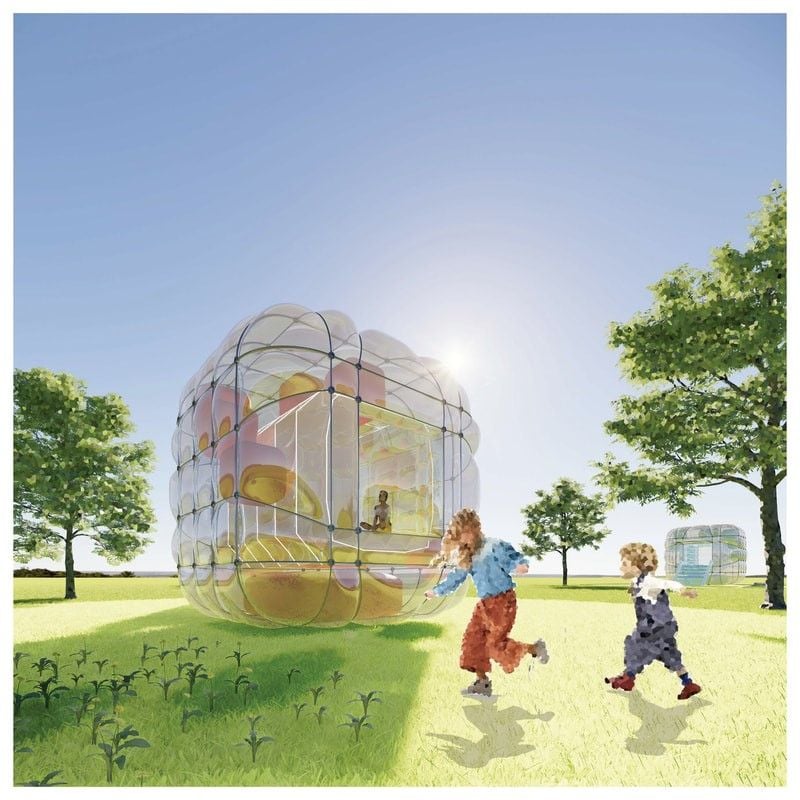
2020 was a year that made us all reexamine how we define the word “home.” Naturally, architectural research initiative Arch Out Loud’s annual competition exploring the “future of home” was filled with ideas about life in a post-pandemic world, as well as solutions to more traditional concerns like climate change and scarcity of resources. The winners creatively wove their utopian desires into conceptual structures, incorporating everything from work/life balance to bio-hacking and even prison recidivism into their new visions for our most personal sanctuaries.
Overall Winner: Shadow Housing
Invented by Jeffrey Liu and Haylie Chan, “Shadow Housing” embodies the values of communal living while using the sun as a guide for daily work activities.
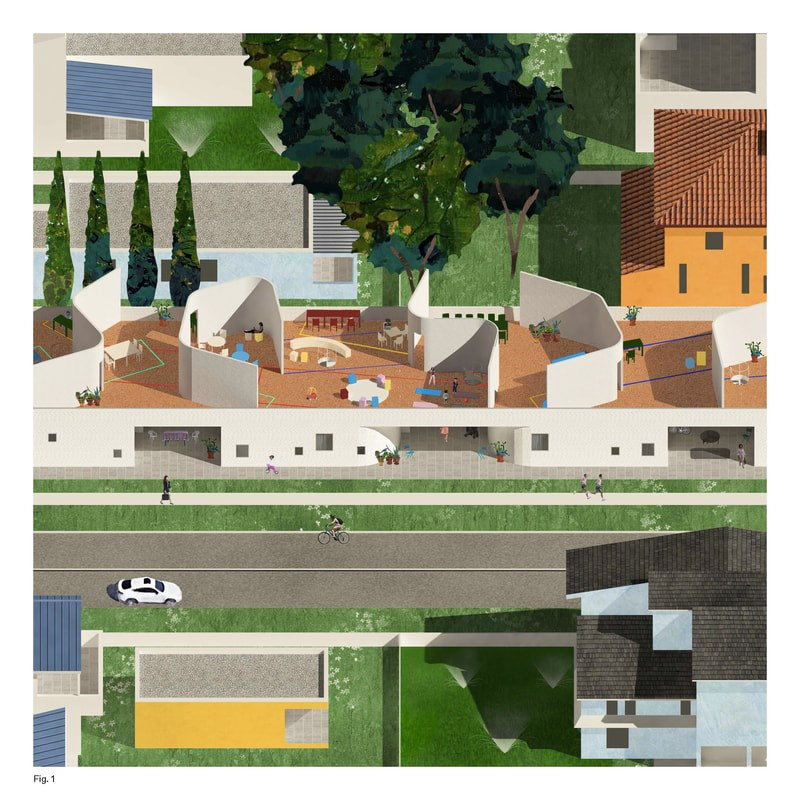
Pointing out that COVID-19 has ruptured the “boundary between office and the home,” the idea suggests that we no longer need to place an “emphasis on productive labor over unwaged housework.” Instead, Shadow Housing integrates an open-air live/work commons that “tethers the workday to the movement of the sun.” The development is proposed to exist in the amenable climate of Los Angeles, with each unit having a ground floor of two private rooms and enclosed patio rooms, and a shared rooftop living area divided by shadow-casting walls. Those walls would be precisely designed to alternately shade work spaces and domestic labor throughout the day, in the hopes of creating a more balanced 24-hour flow.

The concept certainly makes sense for a coronavirus-ridden world and a few arid, temperate environments, but even in sunny Los Angeles, most people don’t want to be outside until the temperatures are comfortable enough for work. Perhaps the idea could be adapted to a glass-enclosed space to still allow for light and shadow but also climate control?
Innovation Award: Biohackers Residence
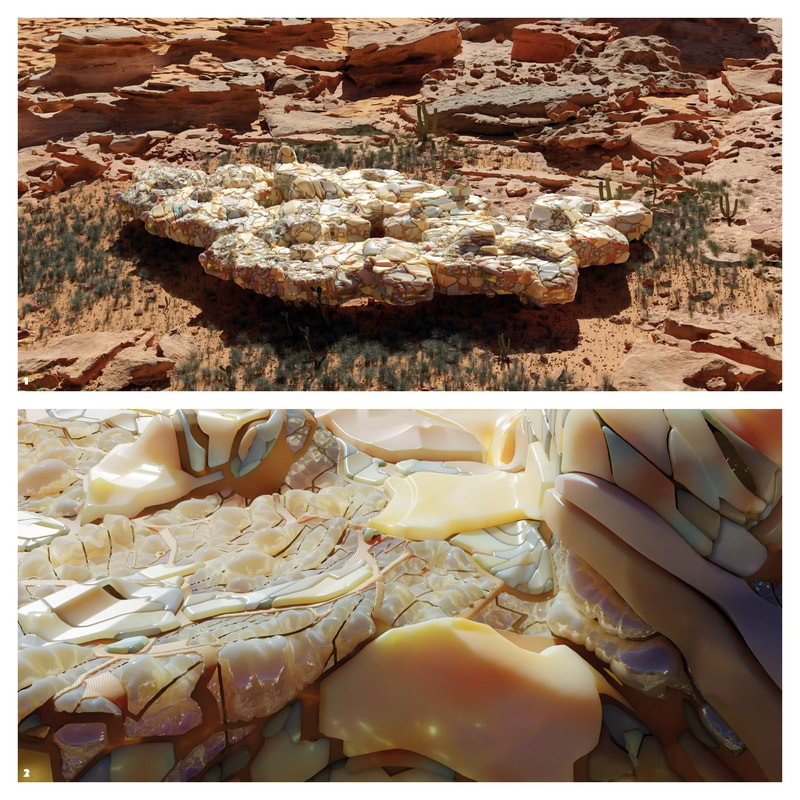

This alien-looking dwelling, ideally located in the red rock deserts of Utah, is designed to be a bio-hacker paradise. For all those seeking “self-empowerment” by challenging “what it means to be human,” this commune, conceptualized by Samuel Esses and Jonathan Wong at Superficium, looks like a genetic mutation of the natural landscape. While the inhabitants mingle in the common lounge areas to use the organic 3D printers and CRISPR editing workstations, the craggy, luminous abode will provide shelter from the outside world (and the law) to help them practice self-experimentation and gene-editing.
Adaptabilty Award: Stuyvesanttown
Designer Carla Bonilla Huaroc envisions a New York City in the year 2035, where the “ratio of luxury to affordable housing causes a major recession” leading to former high-end condos like the Stuyvesant development being converted into other housing needs. Bonilla Huaroc predicts “the crisis of homelessness becom[ing] even more dire, and … the consequences of mass incarceration occurring earlier in the millennium becom[ing] more visible.”
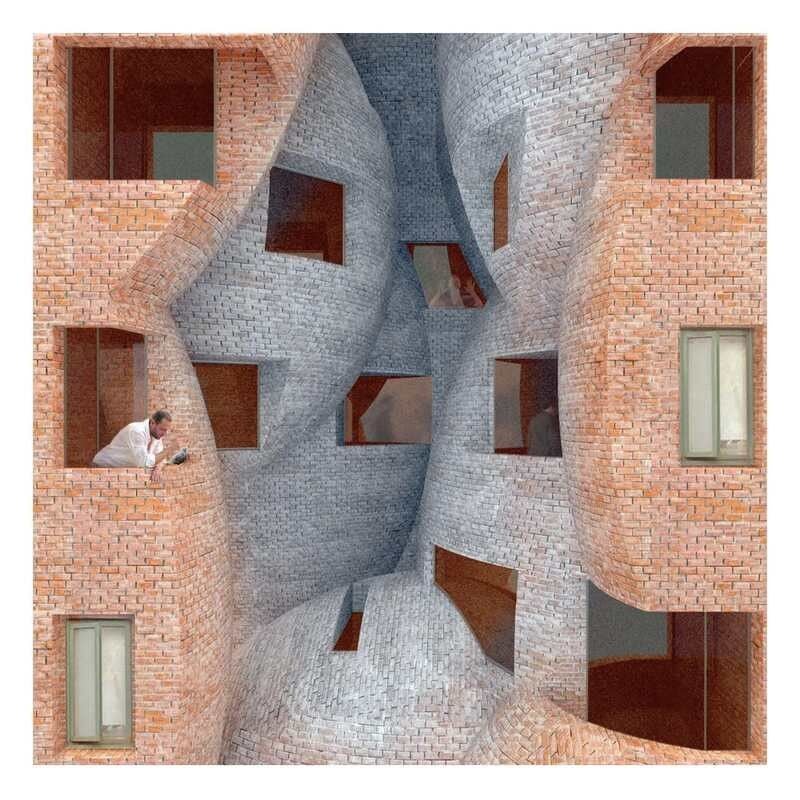
Her vision includes transforming the extravagant apartment high-rise into Stuyuvesanttown, a transitional landing pad for citizens returning from incarceration. The brown brick facade features several cutouts filled in with receded but bulbous gray brick innards. The overall effect looks like King Kong swung through punching holes in the top of the building, but perhaps the design is intended to hint at breaking free from an old life and filling it in with a newer, more malleable existence.
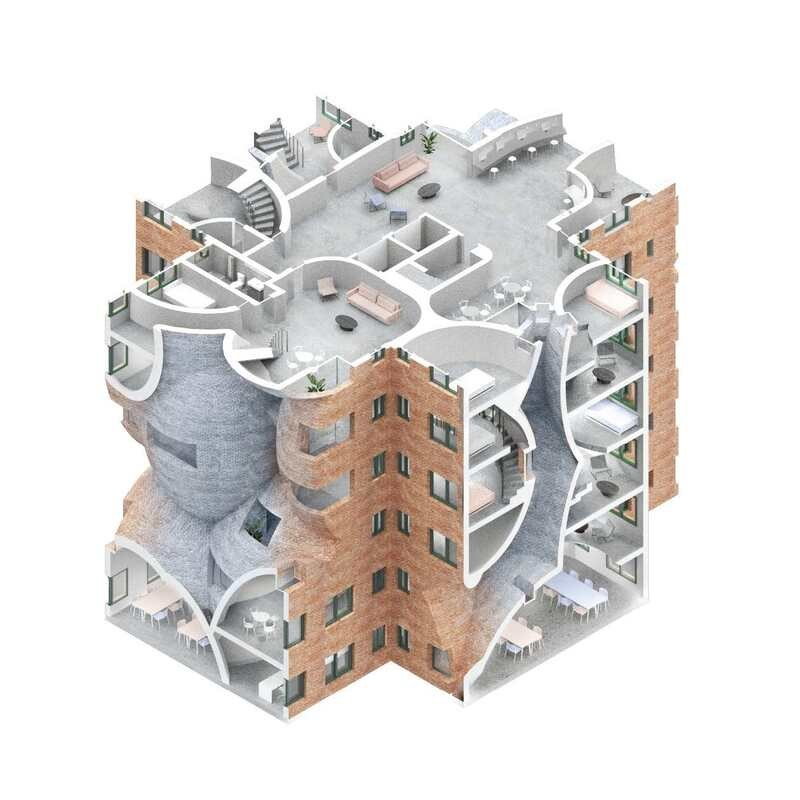
The inside of Stuyuvesanttown would consist of both individual apartments and dorm-type rooms, with the aim of helping people “take one of the first steps…to find safe shelter.” There would also be classrooms and office spaces available for non-profits to help residents learn or regain self-sufficiency skills.
Pragmatic Award: House is Not a Home
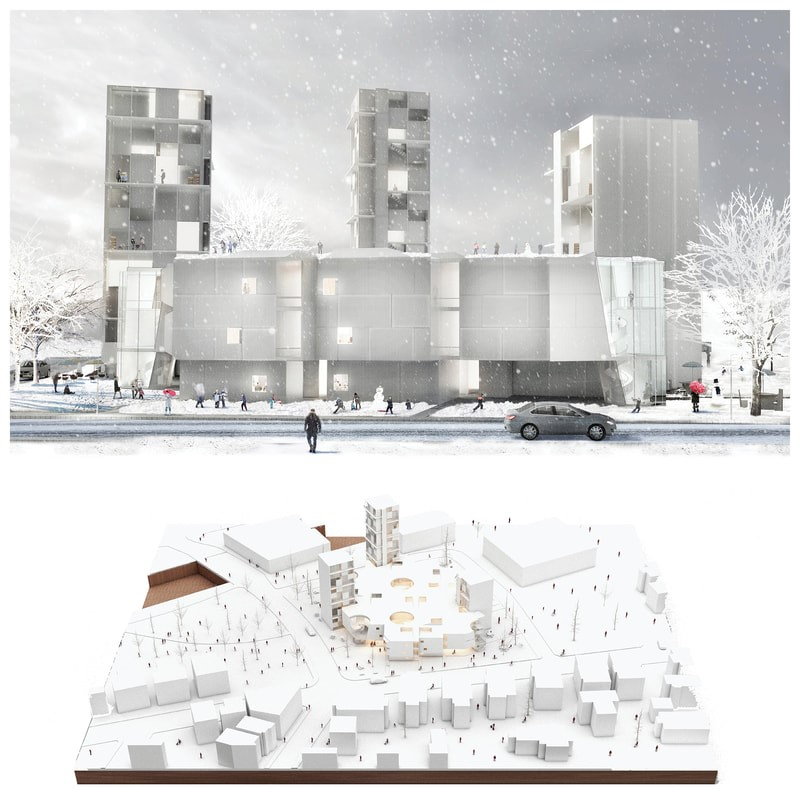
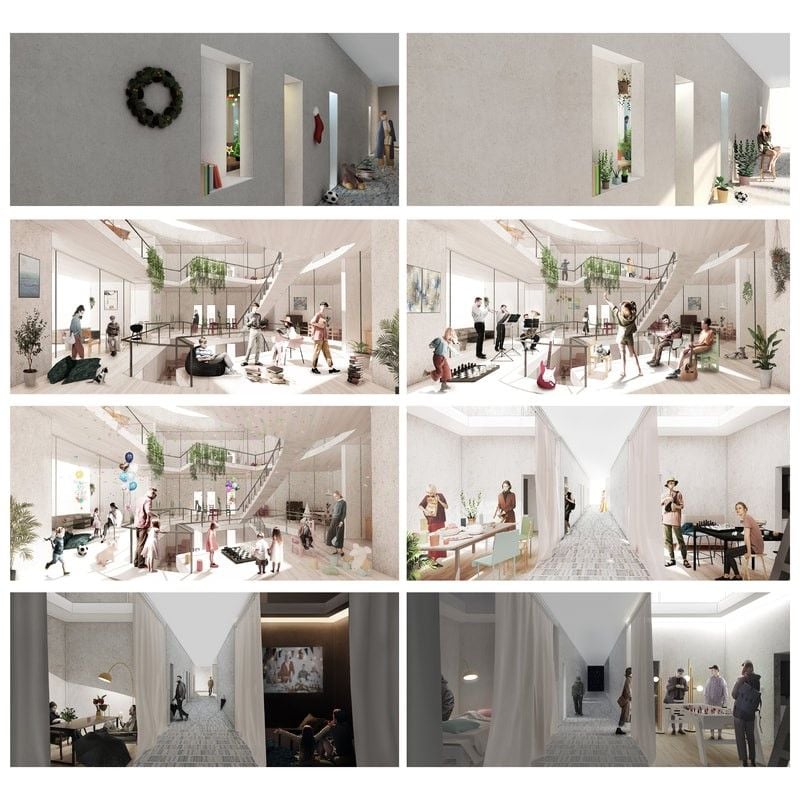
With this theoretical multi-family dwelling, Qin Ye Chen and Yiwen Wang sought to answer the question “how can architecture offer a remedy to social isolation?” The buildings feature overlapping shared spaces interwoven among the private realms. It would also accommodate the inclusion of different demographics and income groups, with each complex offering a range of low to mid-range residences.
Honorable Mentions
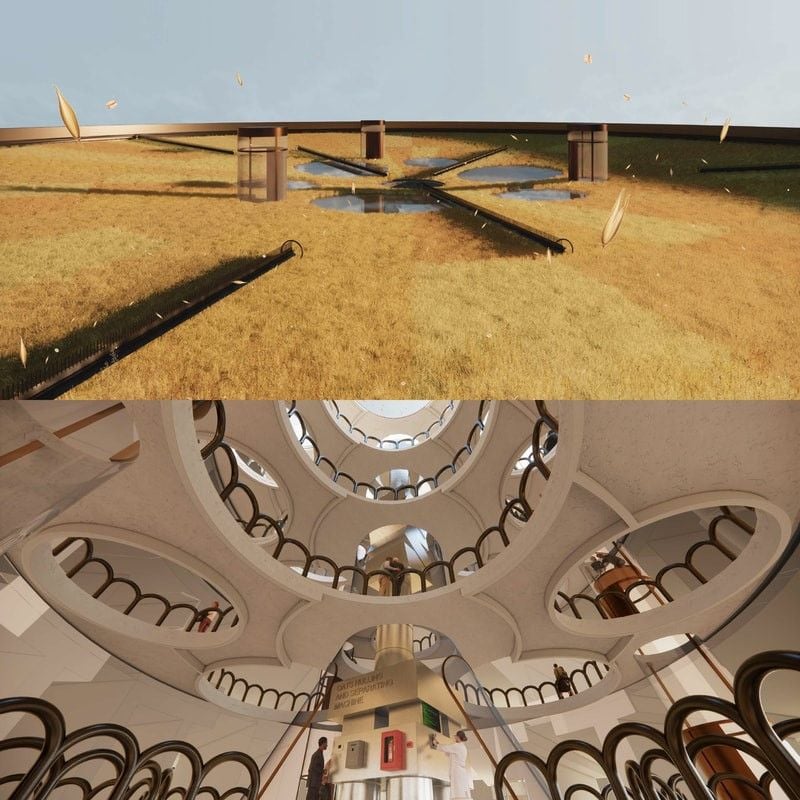
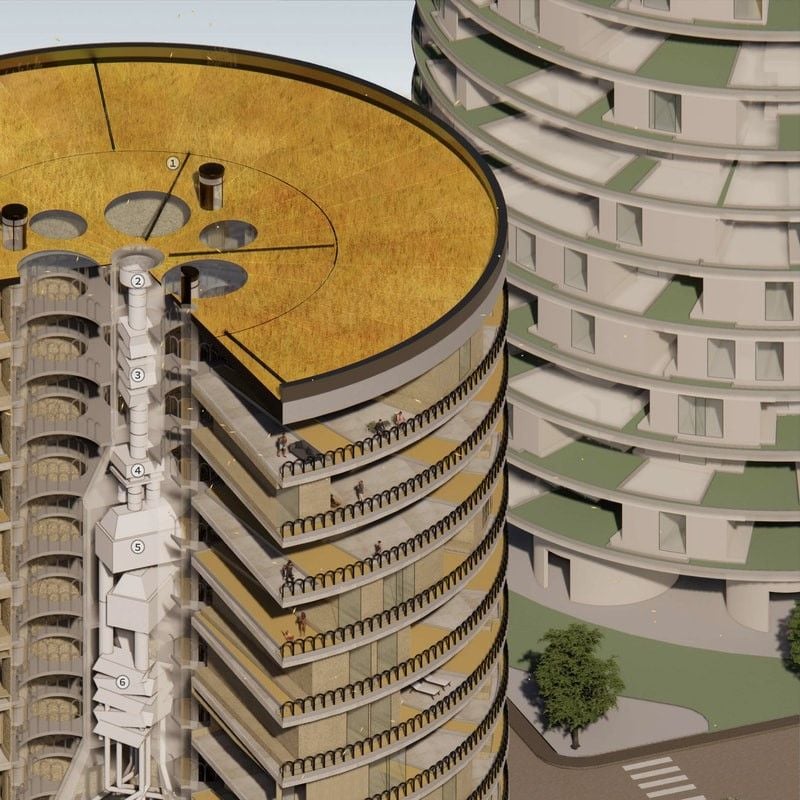

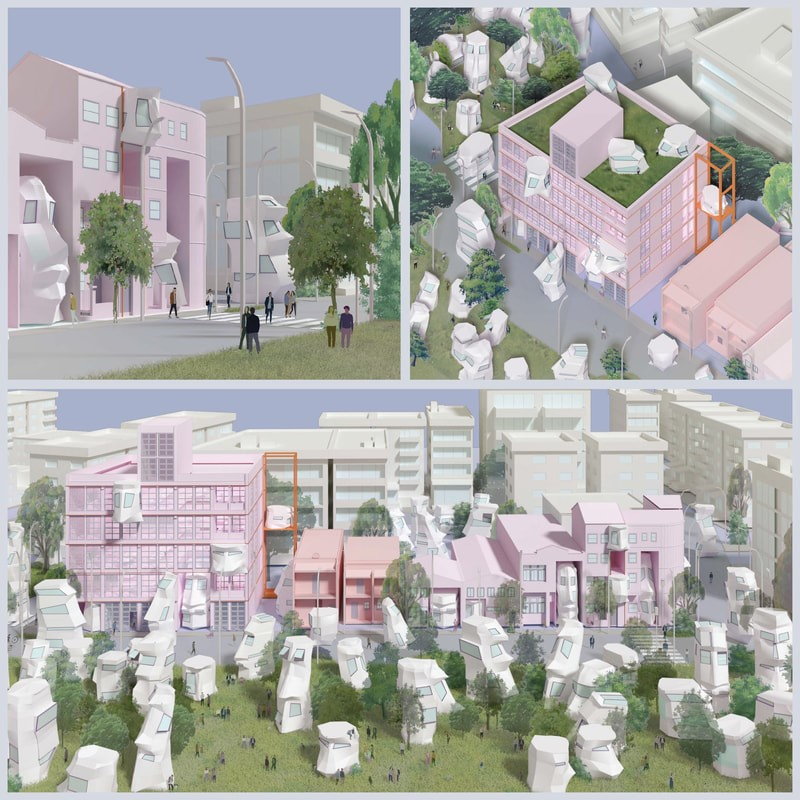

Among the many Honorable Mention awards was “Achiparago,” by Nai-Hua Chen and Eileen Xu, itself a web of urban housing with automated farming levels for more efficient food production. “Bubble” by Sidian Tu is an emergency response to natural disaster and pandemics. With two breathable membranes for structure, the walls themselves form the necessary seating, sleeping, and working furniture. And “Bring Your Home” by Felix Kim, Pui Luk, and Zeb Saiyed would see city parks transformed into mini-Easter Islands, each chock-full of auto-piloted mobile lodgings (resembling the large stone heads from the South Pacific) that are safe for work, travel, and life.




